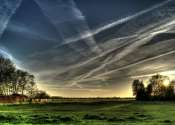Assessing the airborne survival of bacteria in aerosol droplets from coughs and sneezes
The airborne transmission of diseases including the common cold, influenza and tuberculosis is something that affects everyone with an average sneeze or cough sending around 100,000 contagious germs into the air at speeds ...









